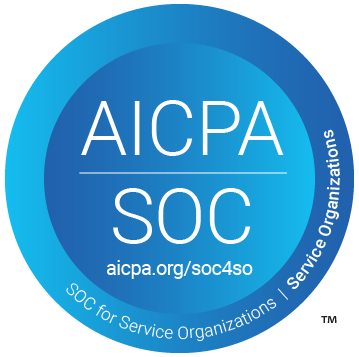The process of post-migration optimization is a critical step in maximizing the benefits of your Azure environment.
While a successful cloud migration marks a significant milestone, the journey doesn't end there. Post-migration efforts focus on ensuring that migrated workloads operate seamlessly, align with business needs, and deliver cost-efficiency, scalability, and enhanced functionality.
With Azure, businesses have access to powerful tools and strategies that simplify post-migration optimization. These efforts are essential to address dependencies, reduce disruptions, and maintain optimal performance. If you're preparing to embark on this phase, our Azure Roadmap can provide the guidance you need for a smooth transition and ongoing success.
The Importance of Post-Migration Optimization
Optimizing your Azure environment post-migration ensures that your cloud infrastructure is fine-tuned to support business objectives. Without optimization, businesses risk underutilizing resources, incurring unnecessary costs, and encountering performance bottlenecks. Post-migration optimization focuses on:
- Improving resource allocation to reduce waste.
- Enhancing workflows for better operational efficiency.
- Implementing automation to streamline repetitive tasks.
- Strengthening security measures to protect sensitive data.
By addressing these areas, businesses can achieve the full benefits of cloud adoption, including enhanced cost-efficiency and improved user experience.
Key Areas of Focus for Post-Migration Optimization
Post-migration is a complex process, covering different critical areas:
1. Performance and Scalability
Azure offers built-in tools to monitor and enhance the performance of your workloads. Focus on the following:
- Continuous Monitoring: Tools like Azure Monitor and metrics dashboards help track performance in real-time and detect potential bottlenecks.
- Scalability: Ensure that resources automatically scale up or down based on demand to meet business needs efficiently.
- Optimization: Fine-tune configurations and adjust resource utilization to maximize efficiency.
2. Cost Optimization
Managing cloud expenses is critical to achieving cost-efficiency. Leverage Azure’s cost management tools to:
- Analyze spending trends and identify opportunities for savings.
- Implement reserved instances for predictable workloads.
- Regularly review resource usage to eliminate unnecessary expenses.
3. Enhanced Security Measures
Azure provides a secure foundation, but ongoing improvements are necessary for robust protection. Post-migration efforts should include:
- Addressing potential vulnerabilities and securing sensitive data.
- Using Azure Security Center to monitor for threats and implement proactive measures.
- Ensuring compliance with industry regulations through regular audits.
Post-Migration Optimization Strategies
Consider these key strategies to boost post-migration:
1. Automation for Operational Efficiency
Automating tasks such as updates, backups, and scaling can reduce manual effort and improve consistency. Azure’s automation tools streamline these processes, ensuring minimal downtime and uninterrupted operations.
2. Aligning with Business Objectives
Optimization should align with your organization's specific business goals. This involves tailoring workloads, applications, and resource usage to meet operational priorities and deliver measurable results.
3. Modernizing Legacy Systems
Modernization is a key aspect of post-migration optimization. Consider refactoring or re-architecting legacy systems to leverage cloud-native capabilities such as containerization, machine learning, or serverless computing.
4. Disaster Recovery and Redundancy
Ensure robust disaster recovery plans are in place to protect against data loss and disruptions. Azure Site Recovery is an excellent tool for maintaining business continuity and ensuring data availability during unforeseen events.
5. Streamlined Workflows
Simplify operational processes by optimizing workflows and leveraging Azure-native features. This includes aligning configurations with workload requirements to enhance efficiency.
Benefits of Post-Migration Optimization
Optimizing your Azure environment provides several key advantages, including:
- Improved Resource Utilization: Ensures that all resources are effectively allocated to meet business needs.
- Reduced Downtime: Proactively addressing potential issues leads to minimal interruptions.
- Enhanced Cost Savings: Advanced cost optimization practices eliminate waste and improve financial performance.
- Scalability: Dynamically adjust resources to align with operational demand.
- Robust Security: Safeguard data with continuous improvements in security measures and monitoring.
Best Practices for Post-Migration Optimization
Here are best practices for the final stage of your migration:
1. Follow a Detailed Roadmap
A clear roadmap ensures that all optimization efforts are aligned with organizational priorities. Our Azure Roadmap provides actionable steps for enhancing your Azure environment.
2. Conduct Regular Audits
Periodic audits help identify inefficiencies and areas for improvement, ensuring that your Azure environment remains aligned with changing business needs.
3. Prioritize Continuous Monitoring
Regular monitoring with Azure Monitor allows you to track real-time performance metrics, ensuring that workloads operate as expected and potential issues are addressed proactively.
4. Involve Stakeholders
Engage key stakeholders in the optimization process to ensure alignment with business objectives and gain insights into operational requirements.
5. Embrace Cloud-Native Features
Use Azure’s advanced cloud services, such as AI integration and DevOps tools, to unlock the full potential of your cloud environment.
Conclusion
Post-migration optimization is a crucial step in realizing the full value of your Azure environment. By focusing on areas like performance, scalability, security, and cost management, businesses can maximize their investment in cloud migration.
With the right strategies and tools, Azure enables organizations to achieve long-term success, streamline operations, and meet evolving business needs. For a comprehensive guide to optimizing your Azure setup, explore our Azure Roadmap and take the next step toward unlocking the full potential of your cloud infrastructure.
Our Azure managed service, in addition to providing a strategic migration map, offers constant monitoring and analysis of your IT infrastructure, to guarantee optimal post-migration.


